A few weeks ago I was fortunate enough to visit a garden in the small village of North Hatley, Quebec, where I live, to see the work of garden makers Jane Meagher and Jean Vanaise. Here, over about ten years, they have transformed a one-acre town lot into a lushly varied garden.
The transformation began when they decided to renovate and enlarge their house. Before they began, the garden around the building was mostly grass plus a few bunches of flowers scattered more or less randomly. Not so today. Now their mini-paradise is set off from the street and surrounding houses by a fence that Jean built to protect the expanding garden from voracious deer.
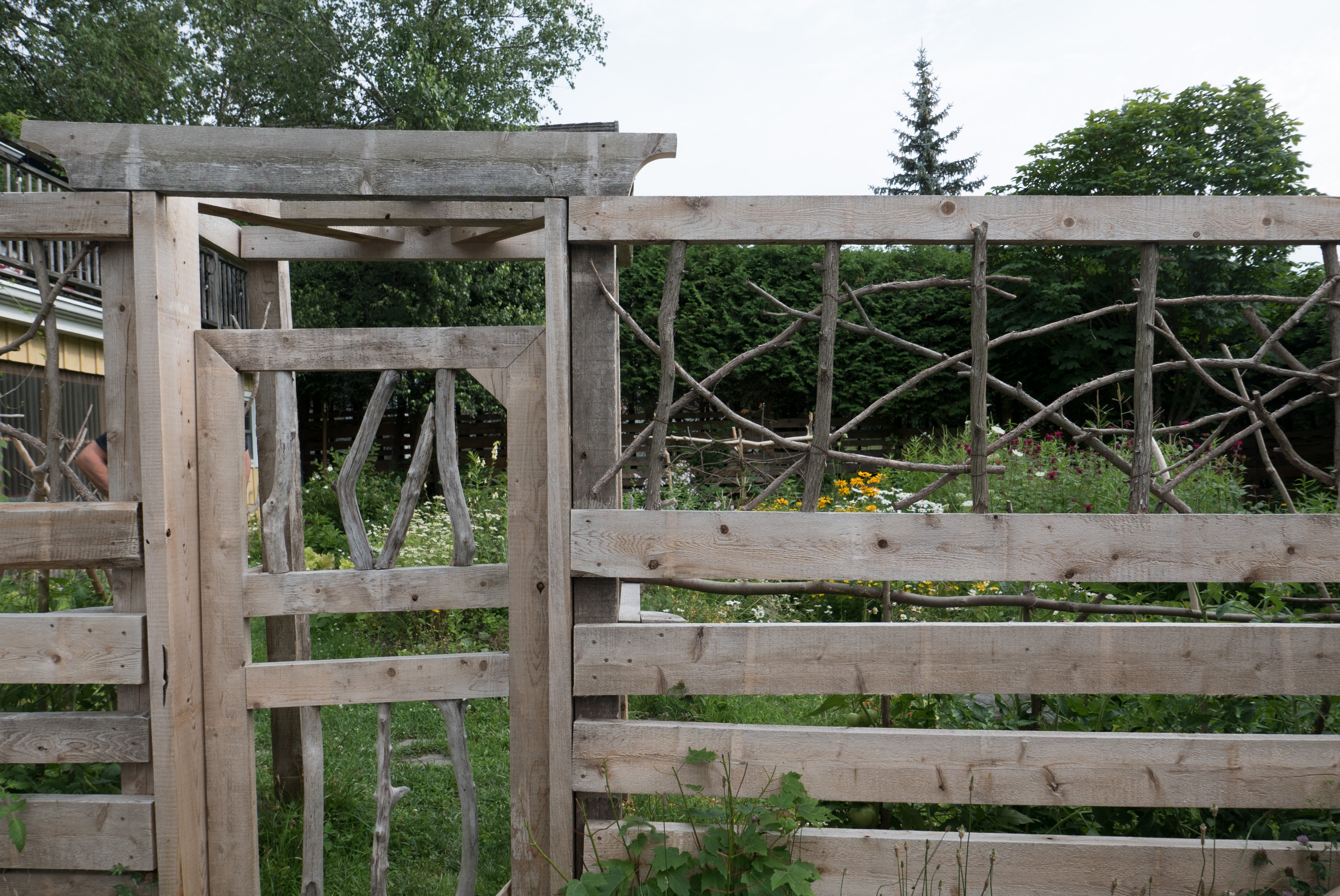
The fence protects three sides of a formerly grassy square; the house itself protects the fourth. From the balcony above, I looked down on the sunny side of the garden.
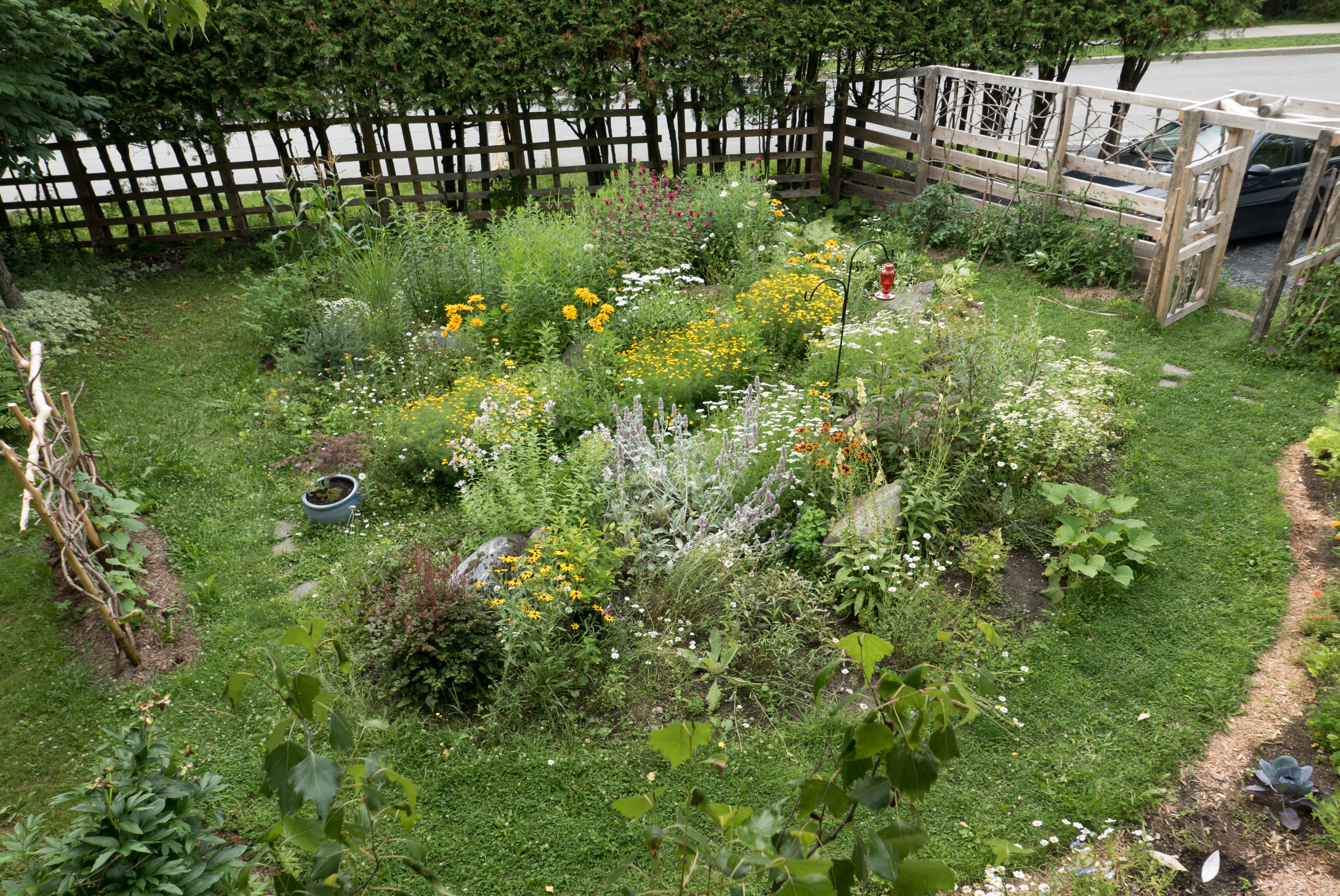
A ground level view shows how what was once featureless is now tightly planted with richly coloured plants, many native to the area.
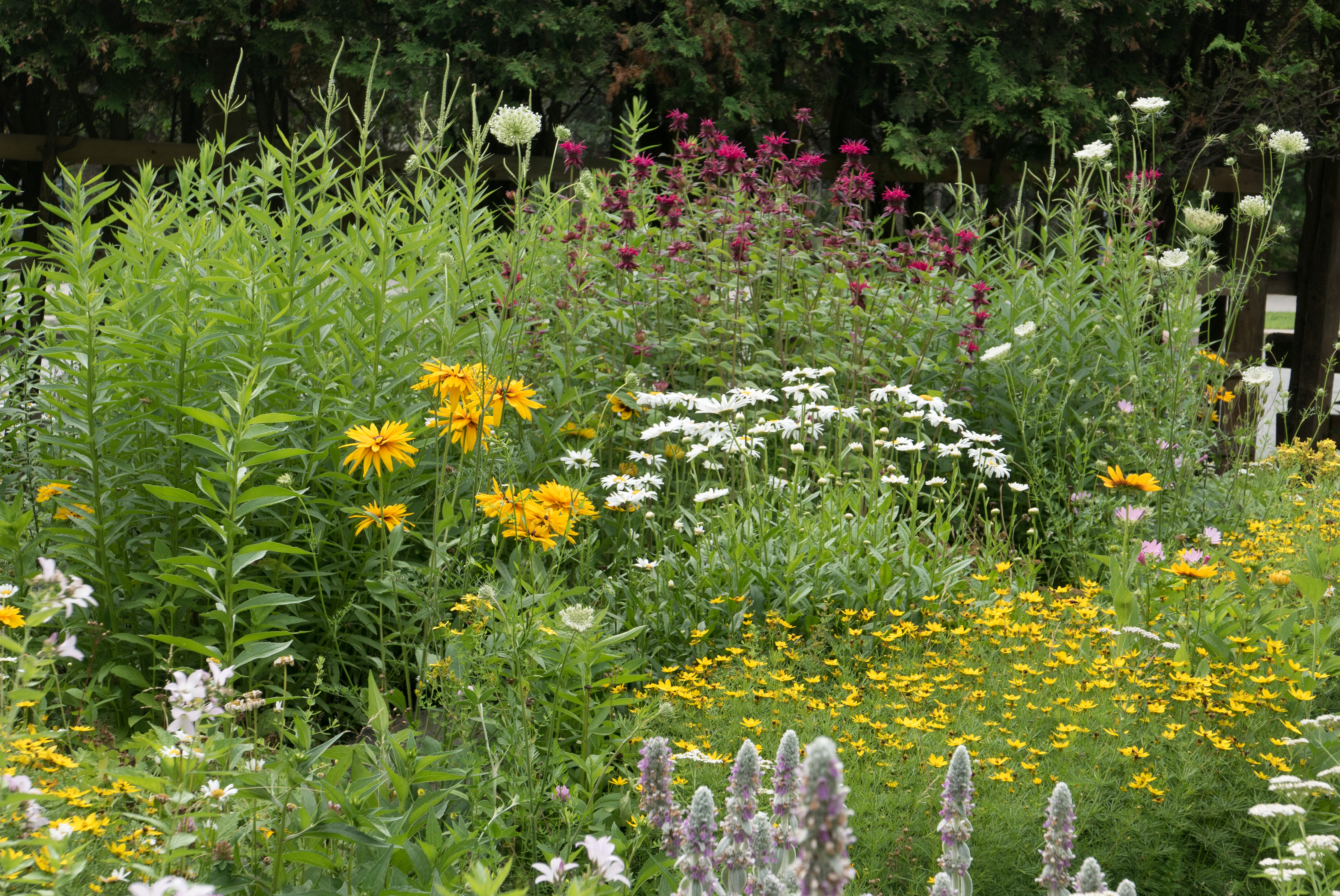
Mixed with these hardy plants are vegetables — zucchini, cabbage, tomatoes and corn. (Will raccoons get the corn before Jane and Jean do?)

By itself this mix of edible and decorative plants would be a winner but it is only one of three distinct sections of the garden. Each responds to the conditions on site and each, consequently, is quite different in character.
The second garden is behind the house. Partly shaded, partly in full sun, this area is unfenced so the plants here have to withstand the appetites of freely wandering deer. They also have to complement rocks and water which are the dominant features of the area. The enormous leaves of butterbur (Petasites japonicus) and coarse, tooth-edged leaves of The Rocket (Ligularia stenocephala) are the perfect choice, providing a dramatic contrast to spiky iris and frothy astilbes.

Jean designed the garden and he and Jane have done much of the work themselves, helped along the way by local gardener Warwick Hache. Cleverly, they used the enormous rocks unearthed when the house was renovated to anchor the pools and small stream that make up the water garden. Today the stream appears completely natural — which isn’t surprising since springs were always there, hiding underground, waiting to be discovered.
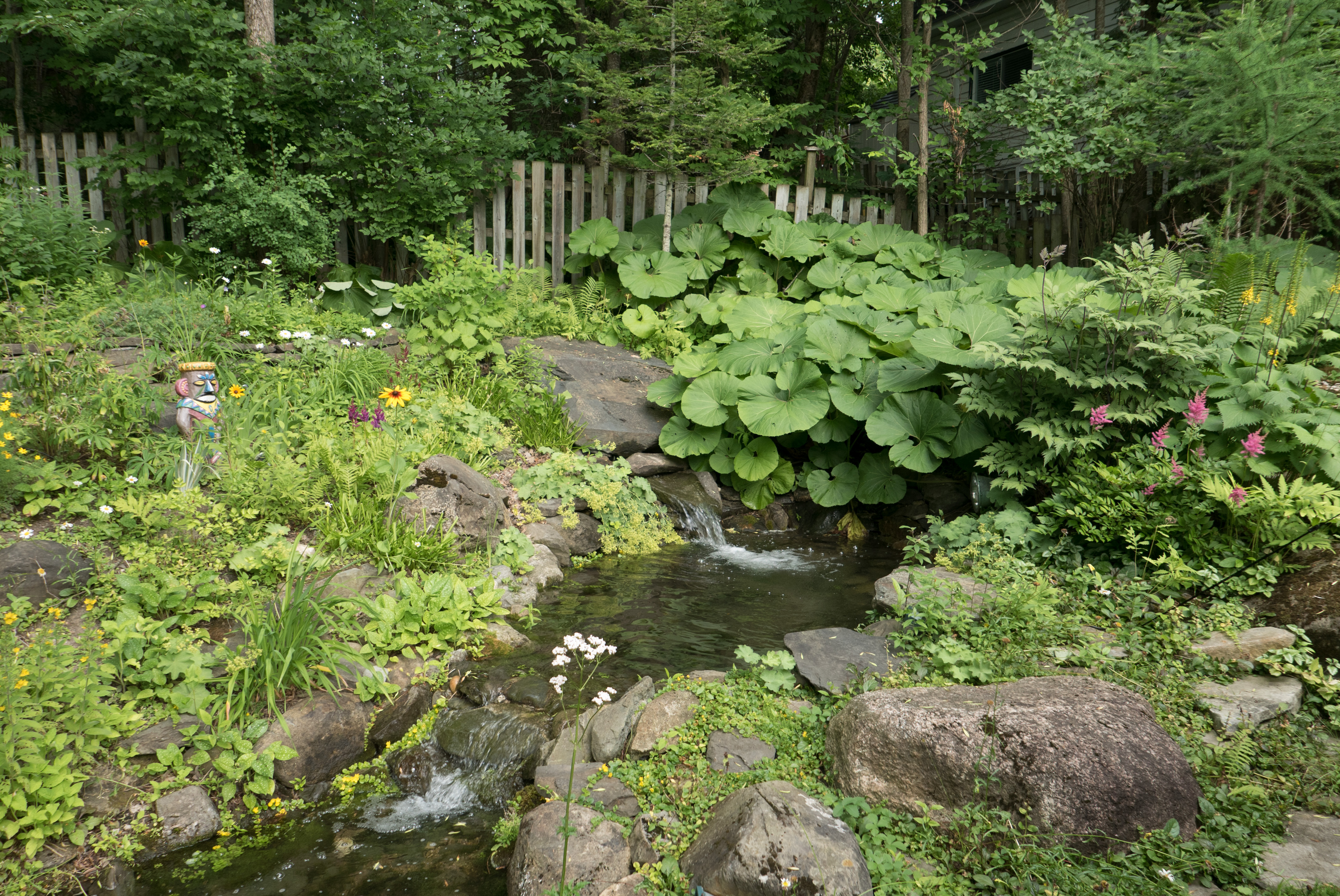
Both the front and back gardens have changed and grown over the last half dozen years as Jean in particular has become more and more engaged in the project. His passion now is a Zen garden he is designing in the narrow space alongside the house.

Hostas original to the garden are even happier now that they are fenced from the deer, and gradually Jean is increasing their number and variety. He is also adding driftwood and cedar branches with interesting shapes and textures. Rocks with patterns worn over centuries by the movement of water sit beside a small Buddha, providing a thoughtful contrast between contemplation and movement, permanence and change.
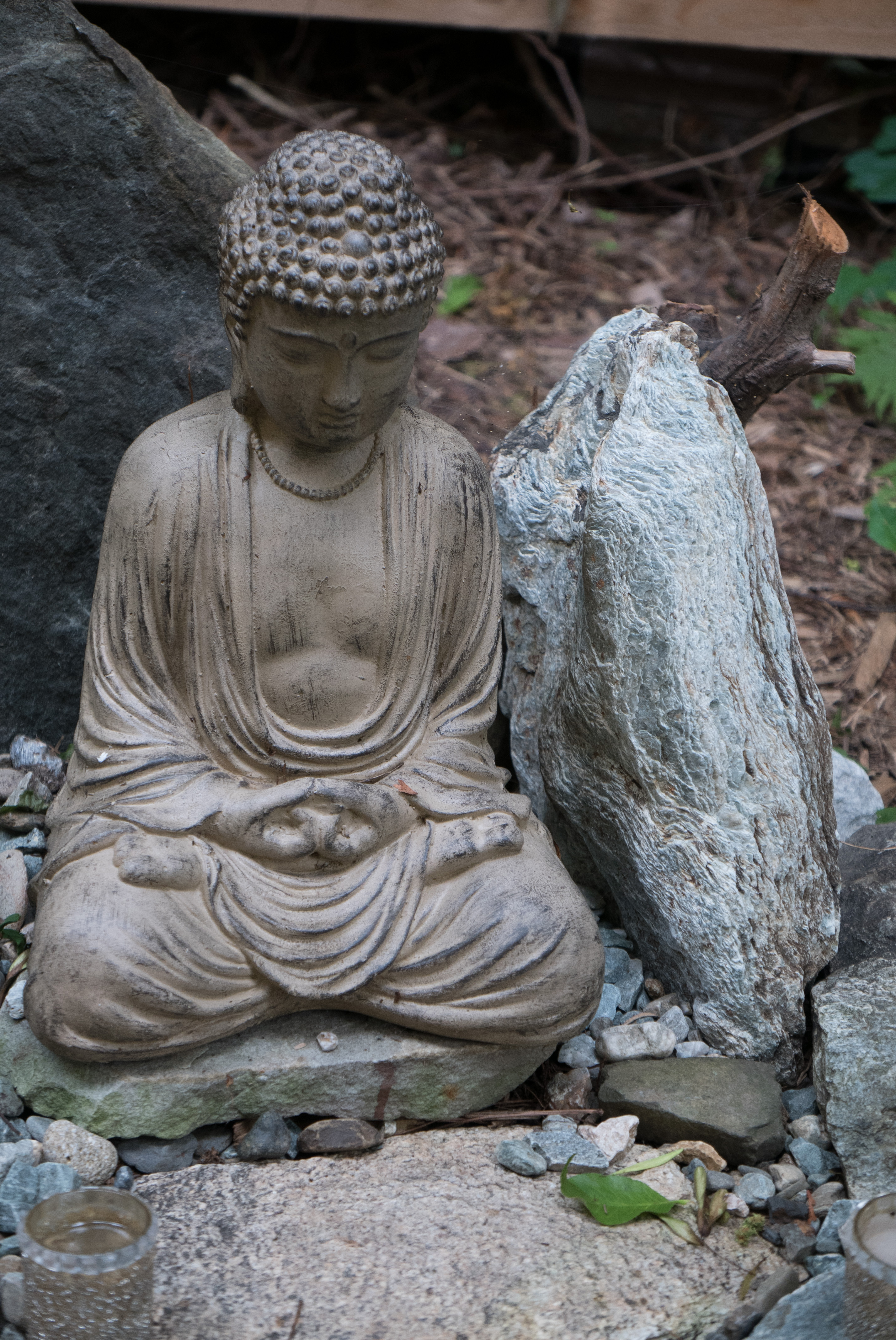
Neither Jane nor Jean is a trained gardener but both know what they like and what they want to achieve. Jean is gradually trimming up the trees in the back garden to open it to the sky, and in the Zen garden, where he is standing in the photo below, he is training an oak tree (!) to resemble a giant bonsai.
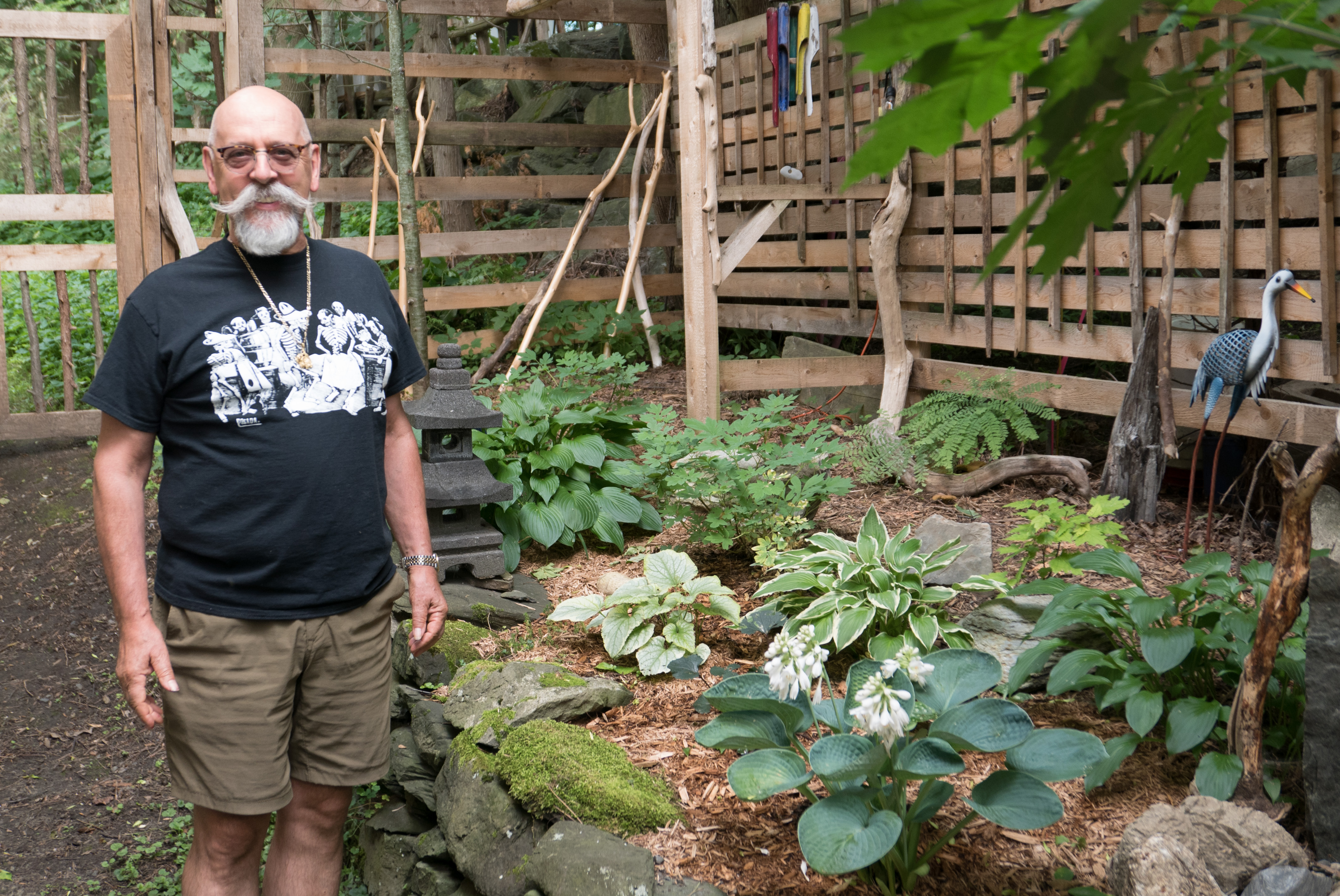
This is not a big garden — perhaps 1/4 of an acre at best. What appeals to me most about it, though, is the enthusiasm with which it has been designed and is being maintained. It is what a home garden is meant to be: not a static, ornamental space but a place to live in, to enjoy, to value.
Bravo, Jane and Jean!







So much to love here. The rustic fence, the mix of vegetables and robust flowers, the lovely stream.
Jean and Jane are doing a really fine job. I love the fence and the table he made (didn’t take a picture of the table, unfortunately.)